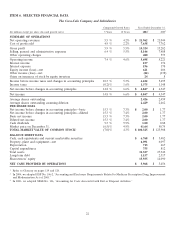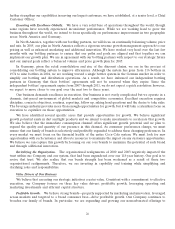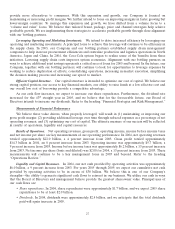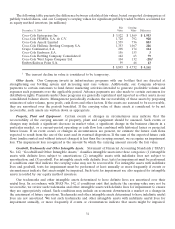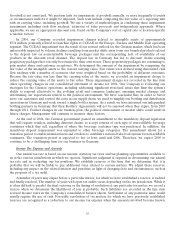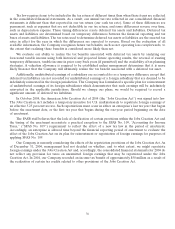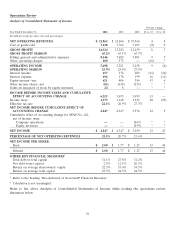Coca Cola 2004 Annual Report Download - page 34
Download and view the complete annual report
Please find page 34 of the 2004 Coca Cola annual report below. You can navigate through the pages in the report by either clicking on the pages listed below, or by using the keyword search tool below to find specific information within the annual report.
into either put or put/call agreements for shares representing an approximately 59 percent interest in CCEAG.
The spread in the strike prices of the put and call options is approximately 3 percent.
Because the terms of the CPL transferred control and all the economic risks and rewards of CCEAG to the
Company immediately, we determined consolidation was appropriate. Refer to Note 18.
In December 2003, the Financial Accounting Standards Board (‘‘FASB’’) issued FASB Interpretation
No. 46 (revised December 2003), ‘‘Consolidation of Variable Interest Entities’’ (‘‘Interpretation 46’’ or
‘‘FIN 46’’). We adopted Interpretation 46 on March 31, 2004. Refer to Note 1.
Recoverability of Noncurrent Assets
Management’s assessment of the recoverability of noncurrent assets involves critical accounting estimates.
The assessments reflect management’s best assumptions and estimates. Factors that management must estimate
when performing impairment tests include, among others, sales volume, prices, inflation, cost of capital,
marketing spending, foreign currency exchange rates, tax rates and capital spending. These factors are often
interdependent and therefore do not change in isolation. Significant management judgment is involved in
estimating these factors, and they include inherent uncertainties; however, the assumptions we use are consistent
with our internal planning. Management periodically evaluates and updates the estimates based on the
conditions that influence these factors. The variability of these factors depends on a number of conditions,
including uncertainty about future events, and thus our accounting estimates may change from period to period.
If other assumptions and estimates had been used in the current period, the balances for noncurrent assets could
have been materially impacted. Furthermore, if management uses different assumptions or if different
conditions occur in future periods, future operating results could be materially impacted.
Operating in more than 200 countries subjects our Company to many uncertainties and risks related to
various economic, political and regulatory environments. Refer to the headings ‘‘Our Business—Challenges,
Risks and Opportunities’’ and ‘‘Forward-Looking Statements.’’ As a result, many assumptions must be made by
management when determining the recoverability of noncurrent assets.
For the noncurrent assets listed in the table below, we perform tests of impairment, as appropriate. For
applicable assets, we perform tests when certain conditions exist that may indicate the carrying value may not be
recoverable. For other assets, we perform tests at least annually or more frequently if events or circumstances
indicate that an asset may be impaired:
Percentage
Carrying of Total
December 31, 2004 Value Assets
(In millions except percentages)
Tested for impairment when conditions exist that indicate carrying
value may not be recoverable:
Equity method investments $ 5,897 19
Cost method investments, principally bottling companies 355 1
Other assets 3,054 10
Property, plant and equipment, net 6,091 19
Amortized intangible assets, net (various, principally trademarks) 164 1
Total $ 15,561 50
Tested for impairment at least annually or when events indicate that an
asset may be impaired:
Trademarks with indefinite lives $ 2,037 7
Goodwill 1,097 3
Bottlers’ franchise rights 374 1
Other intangible assets not subject to amortization 164 1
Total $ 3,672 12
Many of the noncurrent assets listed above are located in markets that we consider to be developing or to
have changing political environments. These markets include Germany, where the nonreturnable deposit law
32


